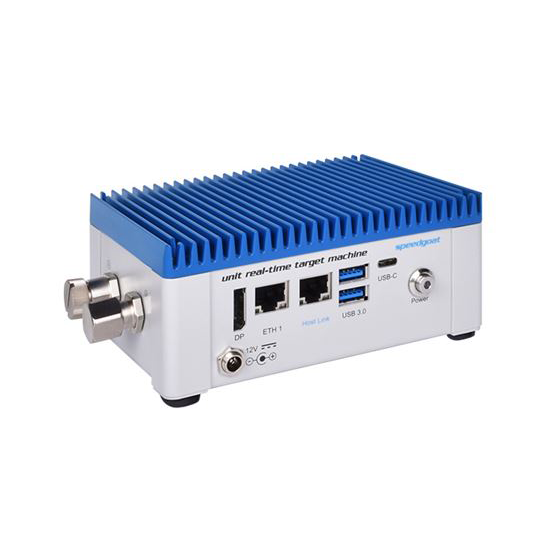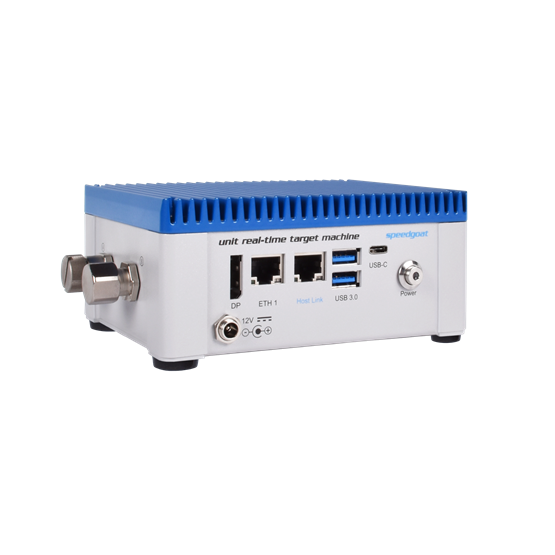Unit Real-Time Target Machine
Small, lightweight and rugged, the Unit real-time target machine features a quad-core 1.6 GHz Intel® Atom® processor, a 2.5” SSD for data logging and two on-board GbE ports for host-target and other Ethernet-based communications.
The Unit real-time target machine is expressly designed to run and automate testing of real-time applications created from Simulink®. Sample rates above 20kHz are achievable with the IO397 Simulink-programmable FPGA I/O module option.
Featuring one I/O expansion slot, this target machine can be expanded with one of a range of Speedgoat I/O modules to support:
- Analog and Digital connectivity, and Serial (RS232/RS422/RS485) protocols
- Motion control and encoder feedback (PWM generation and capture, absolute and incremental encoders, EnDat 2.2, BiSS)
- SPI and I2C protocols, as well as the Dshot protocol for drones
- Automotive protocols including AUTOSAR, CAN, CAN FD, LIN, XCP, and SENT
- Industrial protocols including CANopen, EtherCAT, PROFIBUS, PROFINET, EtherNet/IP, Modbus TCP, Modbus RTU, and POWERLINK
- Energy protocols including DNP3 and IEC 61850
- Simulink driver blocks for I/O connectivity
- Run real-time applications created from Simulink and Simulink Blocksets using Simulink Real-Time from MathWorks®
- Supports HDL Coder™ workflow with the IO397 FPGA I/O module
- Automate testing with Simulink Test™
- Build host GUIs with MATLAB App Designer and deploy
- Openframe option available
- Fully assembled and tested to meet your needs
- Comprehensive warranty and support services
MathWorks software products are optimised to guarantee the best real-time performance, workflow integration and usability with Simulink Real-Time™ and Speedgoat target machines.
Speedgoat builds and optimises its target machines for use with Simulink Real-Time, as well as guaranteeing that each target machine is configured to meet specific requirements, such as sample rate, I/O, and environmental.
Every target machine comes with the Speedgoat library, providing Simulink driver blocks to support all interfaces and simple Simulink models to get up and running quickly.
- Rapid control prototyping including motion controls
- Embedded controller for small-to-medium scale deployments
- Desktop hardware-in-the-loop simulation
- Restbus simulation, calibration, monitoring, and bypassing
- Education
- Mobile, field and in-vehicle use
- Confined areas





